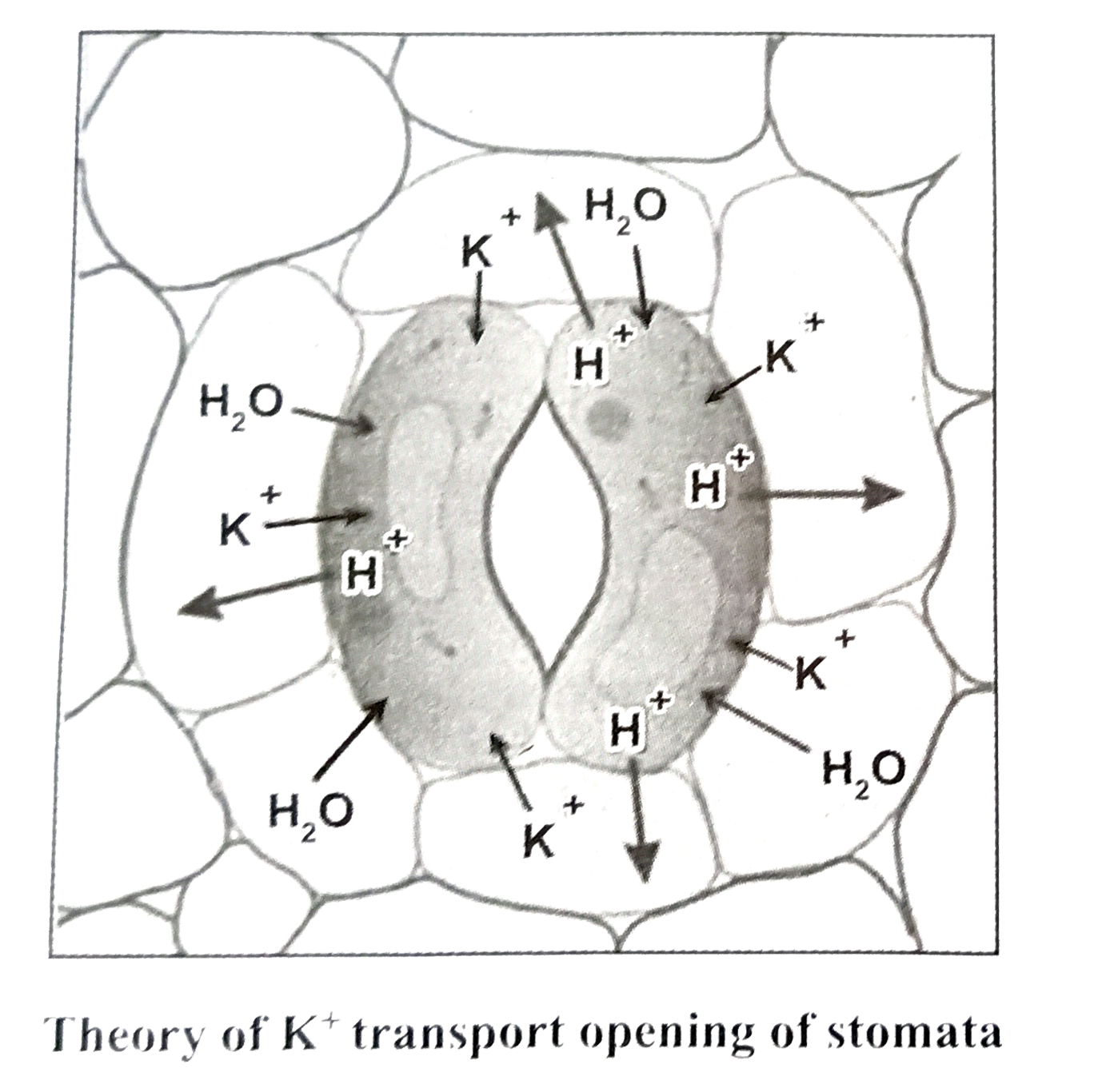InterviewSolution
Saved Bookmarks
| 1. |
Question : Describe the K^(+) Transporttheory on transpiration . |
|
Answer» Solution :Theory of `K^(+)` transport theory was proposed by LEVIT (1974) and elaborated by Raschke (1975). According to this theory, the FOLLOWING steps are INVOLVED in the stomatal opening:  In light i. In guard CELL, starch is converted into organic acid ( malic acid). ii. Malic acid in guard cell dissociates to malate anion and proton `(H^(+))`. iii. Protons are transportedthrough the membrane into nearby subsidiary cells with theexchange of `K^(+)` ( Potassium ions) from subsidiary cells to guard cells. This process involves an electrical gradient and is called ion exchange. iv.This ion exchange is an active process and consumes ATP for energy. v. Increased`K^(+)` ions in the guard cell are balanced by `Cl^(-)` ions. INCERASE in solute concentration decreases the water potential in the guard cell. vi. Guard cell becomes hypertonicand favours the entry of water from surrounding cells. vii. Increased turgor pressure due to the entry of water opens the stomatal pore. In Dark  Thoery of `K^(+)` transport Closing of stomata i. In dark photosynthesisstops and respiration continues with accumulation of `CO_(2)` in the sub-stomatal cavity. ii. Accumulation of `CO_(2)` in cell lowers the pH level. iii. Low pH and a shortage of water in the guard cell activate the stress hormone Abscisic acid (ABA). iv. ABA stops further entry of `K^(+)` ions and also induce `K^(+)` ions to leak out to subsidiary cell from guard cell. v. Loss of water from guard cell reduces turgor pressure and causes closure of stomata. |
|